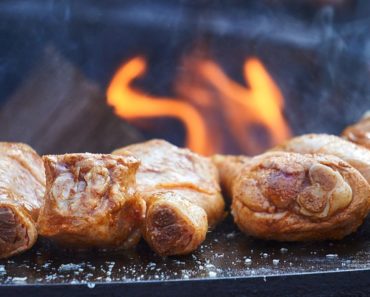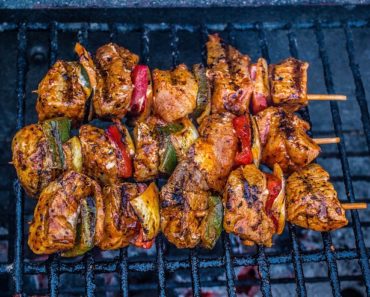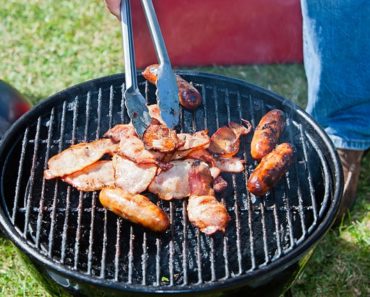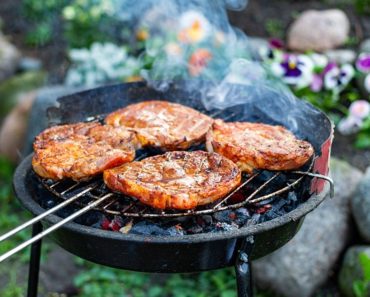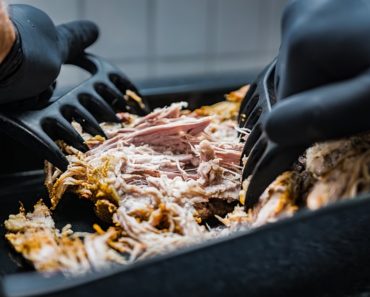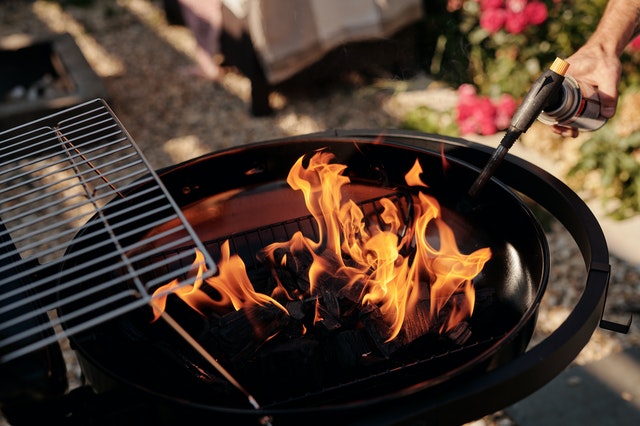
How to convert a natural gas grill to propane?
Your gas grill is about to become outdated, and you’re looking for a way to convert it from natural gas to propane. Propane grills are more environmentally friendly than other types of grills because it produces less soot and there is no risk of grease fires that can happen on some other styles. Propane also has a higher rating than natural gas, which means that your food will cook faster with less chance of burning or overcooking. In addition, propane doesn’t have any odor while cooking as some other fuels do. The conversion process will take some time but the end result will be worth it: you’ll save money on your monthly bills and have an option that’s more environmentally friendly than natural gas.
It’s getting colder outside, which means it’s time to break out your trusty barbecue or griddle so you can start cooking up all of those delicious fall dishes! How to convert a natural gas grill to propane? Find out here!
Table of Contents
What is Propane gas? Advantages and disadvantages of propane gas?
Propane is the third simplest form of hydrocarbon, which means it consists entirely of carbon and hydrogen atoms. Propane is colorless, liquefied gas containing three-carbon molecules linked together with single bonds. The maximum density for propane is 445 kg/m3 at 13 °C, making it approximately 1.5 times heavier than air. It can be easily compressed or expanded if stored under pressure or allowed to evaporate into vapor respectively. Propane’s heat transfer rate is almost twice that of natural gas; its typical specific gravity relative to air is 0.55, and it has a range of explosive mixtures with air varying between 4% and 75% by volume.
Propane is a flammable gas and, thus, can pose a risk of fire and explosion. It should be kept away from heaters, electrical generators, motors, open flames, hot surfaces, sparks or any other sources of ignition. Serious injuries have resulted when people thought they turned off the supply at the tank but did not realize that there was still propane in the line.
How to convert a natural gas grill to propane? What are some common household uses for propane gas? Propane is commonly used in grills, torches for welding and brazing, small stoves, portable heaters such as camping stoves, outdoor fireplaces known as patio heaters, spas, water heaters. It is also found in the fuel tanks of some cars; when burned with oxygen it makes for an efficient motor fuel since it produces much higher energy per volume than gasoline or diesel. It’s also used in many other industries such as propell in aerosols and airbags, and the most common use in household heating, either by direct burning or via a gas burner. Propane is used to make all sorts of plastics including propylene which is combined with butadiene produced from ethanol derived from cornstarch to produce high-energy density synthetic rubber.
Many people think that propane is not safe for indoor use because when burned with oxygen it produces carbon dioxide which makes you lose breath! Thus, people think they can suffocate from refilling their gas tank using an open flame indoors. However, modern day appliances have electronic valves that shut off the flow of gas instantly when there is any lack of oxygen in the room.
Another misconception is that propane will explode if mishandled, but this is not true. Propane can be stored in a tank for 3-8 months without being vaporized as long as the temperature stays between -40 and 50 degrees Fahrenheit, which it will do just about everywhere. In fact propane gas has been used as a vehicle fuel since the 1920s.
How to safely refill their propane tank? First of all, you should always buy your refills at reputable establishments that carefully follow safety procedures. You should never ever use any open flames or sparks to fill up an indoor cylinder; instead use only apparatuses supplied by the cylinder manufacturer. A typical outdoor propane cylinder must hold not less than two pounds of pressure to operate properly and the valve should never be set below 40% of its capacity. In other words you should only open the cylinder when it’s two-thirds full, and stop when it’s half full to bring it inside for a refill.
There are many advantages to using propane gas at your home. For one thing, propane gas can be used for cooking, heating and even barbecues. Propane is easy to use and it is considered more economical than other gas. Since propane is also odorless it won’t make its presence known as other fuels.
Propane has some disadvantages too. One of them is that it must be kept in cylinders or tanks which need special care because they will explode if mishandled or punctured. This means safety precautions must always be observed when handling propane. The price of propane may also change over time so you should compare the cost every now and then as prices fluctuate depending on supply and demand.
Some disadvantages of propane gas are that it may be hard to store and handle, there is a possibility that the substance will become overheated which can cause harm. Propane gas also has a bad effect on the environment if not handled properly. Some people find propane to be more expensive than other types of fuel while others think propane offers better cost savings over time.
You may like this: Top 9 Best Gas Grills Under $500
What is Natural gas? Advantages and disadvantages of natural gas?
Natural gas is a combustible hydrocarbon that consists mainly of methane and ethane. It is used as a fuel in the generation of electricity and for heating purposes. Natural gas can be obtained from coal beds, oil wells and also by means of deep- drilling into the earth where it is trapped in shale formations.
Natural gas is a combustible mixture of gaseous hydrocarbons that are found trapped underground. The colorless, odorless and tasteless gas can be used as an energy source for heating or cooking purposes. The main components in natural gas are methane, ethane and butane. These gases rise from high-pressure underground reservoirs, where they have been formed over hundreds of thousands of years by the decomposition of biomass from decomposed plants and animals. Natural gas does not contain sulfur or other impurities, which makes it very clean burning compared to other forms of fuel such as oil, coal and wood.
The benefit of using natural gas is that when burned, it releases fewer greenhouse gases like carbon dioxide compared to other fossil fuels like coal and oil. Natural gas emits about half the CO2 that coal does when burned, but it still emits CO2; only not as much. The process by which gas is extracted can also be risky. Drilling companies use large amounts of pressurized water and chemicals to crack the rocks. This may contaminate groundwater, as methane gas is released along with toxic chemical byproducts. It can also release harmful chemicals such as radium, mercury and lead into the air which increases risk for cancer and degrades mental development in children.
Natural gas is methane that has been turned into a liquid. This liquid is 600 times smaller in volume than methane. As it needs to be transported through very expensive pipelines, carrier companies use Liquified natural gas. The liquefaction process turns natural gas into liquified natural gas by cooling the natural gas to -162 °C turning it into liquid at atmospheric pressure. It can stay as a liquid at normal temperatures if stored under pressure for example inside special containers on ships or trucks. When it arrives at its destination it will be re-gasified using steam and returned into gas form.
What are the benefits of being able to turn natural gas into liquid? It allows transportation over long distances without the risk of leakage. It has a higher energy content compared to methane alone so it is very efficient in everything that uses heat, for example, electricity generation and industry.
Since liquified natural gas is 600 times smaller in volume than methane, when there is an accident it will result in 6 times bigger damages. Another downside of liquefying natural gas is that it needs a large amount of energy which impacts on the carbon footprint of this process making it even more harmful than burning methane directly.
What alternatives could be used instead? Renewable energy seems like a reasonable alternative but not over the short term because it would require significant investment in renewable resources such as solar panels or wind turbines before we can see any results.
Replacing fossil fuel with natural gas, increasing the share of clean energy sources in the total energy mix is one of the most important objectives of the government policy. Greater use and exploitation of shale gas and oil resources could contribute to achieving this objective. Certainly it would be a step forward towards reducing carbon dioxide emissions into the atmosphere and global warming.
However, we should not forget that natural gas as methane is also a greenhouse gas which contributes significantly to climate change. Moreover natural gas production may lead to more significant methane emissions during production, transportation and storage than previously thought.
It was estimated that because of these methane emissions, shale gas is actually worse for global warming than coal, at least in the short term. On this basis it came to the conclusion that increasing use of natural gas may even accelerate global warming. Instead, we could achieve greater CO2 reduction using renewable energy sources which emit little or no greenhouse gases such as wind energy, solar energy.
Without a doubt, the most obvious advantage of natural gas is that it’s a renewable fuel. The same amount of physical material doesn’t need to be mined or drilled each time we want power from it. Instead, we just have to wait for nature to replenish it. In addition, natural gas emits less carbon dioxide than both coal and oil when burned-about half as much as coal and only slightly more than oil. It does still produce greenhouse gases, but its CO2 emissions are significantly lower than those coming from coal-fired power plants.
See more: Top 8 Best 4 Burner Gas Grills
Comparison between propane gas and natural gas? Why must you convert a natural gas grill to propane?
In comparing both gas and natural gas, some ideas have pointed out that propane is a by-product of the distillation of crude oil, a non renewable source. In fact, according to some sources, one ton of propane implies at least 5% more CO2 emissions than a ton of diesel. This fact has been used as an argument against using this fuel in applications such as heating. We investigate these claims and show that they are not true.
A common mistake made when comparing carbon dioxide emissions from energy sources is to treat all greenhouse gas emissions as equivalent. This assumption can lead to false conclusions since different fuels produce different ratios of methane, carbon monoxide, nitrogen oxides, and other substances that are greenhouse gases or cause smog. All of these emissions must be considered when evaluating the environmental impact of powering a vehicle with propane, gasoline, natural gas, or any other fuel.
How to convert a natural gas grill to propane? Comparison between propane gas and natural gas. Propane has been used as an alternative to natural gasoline in the world since the middle of the 20th century for a number of reasons including its low cost, low environmental impact and high energy density. In recent years, this hydrocarbon has found another use as a cooking fuel in domestic applications. Since it contains less carbon dioxide per unit of heat released than most other fossil fuels that are commonly used for heating purposes, propane gas is considered to be a cleaner alternative.
During combustion, propane gas releases about 44.3 kilocalories per cubic meter of heat whereas natural gasoline and methane release about 47 kW/m3 and 50 kW/m3 of heat respectively. As a result, the propane gives off less environmental impact than these hydrocarbons.
Propane is stored under low pressure in cylindrical steel containers that have capacities of between 14 and 220 liters. The cylinders are available with either a horizontal or vertical outlet valve depending on whether they are smaller or larger models It is also more efficient than electric heating
Comparing propane and natural gas, the first thing that pops into mind is probably: I’m using propane to fire my grill in the future. But what you might not realize is that somewhere along the way, your grill became a useful tool – and perhaps even – an essential appliance – for your household or business.
Since we’ve established that propane is used to run appliances like grills and heaters, let’s talk about how it compares with one of its main competitors: natural gas. Although they’re both hydrocarbons and flammable compressed gases, some marked differences between them should prove helpful in making sound energy decisions at home or on the job.
Propane and natural gas, also known as methane, are both substances that contain a high amount of energy that can be readily burnt to release heat. This makes them some of the most common and useful sources of energy around. But there are differences between them from an infrastructure perspective – specifically pipelines – as well as from a cost perspective.
Firstly, let’s compare the two gases from a pipeline infrastructure standpoint: propane comes primarily from natural gas wells or oil refineries whereas natural gas is usually found with crude oil underground; additionally, since it needs to be refined before it can be used, natural gas is more expensive than propane which is found and produced in pure form for a cheaper price.
From a cost standpoint then, you might assume that natural gas would be the cheaper of the two; however, this simply isn’t true. Despite their similarities both are hydrocarbons with high energy content, propane has superior heating values to natural gas which make it cheaper per unit of energy.
Being able to produce heat more efficiently than its competitor means that propane is worth considering as a fuel source at home or on the job – especially when you factor in how safe it is too! Propane’s lower flammability, higher ignition temperature and wider explosive limits mean that it’s significantly less likely to ignite than natural gas. As a bonus, propane is environmentally friendly compared to other fossil fuels since it combusts cleanly without producing any sulfur dioxide or soot. Additionally, propane is a better option for vehicles thanks to its high octane rating and high cetane number which make it more efficient than gasoline. Propane’s use in cars is one of the reasons why you see so many propane filling stations around today! In conclusion, while natural gas certainly has its perks, there are some benefits to using propane over natural gas – especially if you live or work somewhere that uses a lot of appliances regularly such as homes or businesses with pools, spas and hot tubs should consider switching to propane.
If you have a natural gas grill, or are considering purchasing one, then you might wonder why it is not possible to just hook up the grill to the local gas line without converting it. The answer lies in how natural gas grills operate. Natural gas grills use either a standing pilot light which must be lit with a small flame before cooking or an electronic spark ignition system that requires electricity to run. Of course, there may also be other reasons why you would want to convert your natural gas grill to propane. You may only have access to propane and want to take advantage of its lower cost and greater availability although this will not always apply, or because you plan on transporting the grill to other locations and will not be able to hook up to a local gas line.
How to convert a natural gas grill to propane? Read more…
Find and purchase a propane conversion kit that matches the size of your grill
You’ll most likely need a wrench and some pliers, but we recommend familiarizing yourself with your current setup before attempting any kind of changeover so you know what you’re looking for when doing this at home. This is especially true if you have experience with changing out valves and such on your unit already.
How to convert a natural gas grill to propane? How difficult is it to switch my grill from natural gas to propane? This also varies with each product. If you have simple burners, valves and lines it may be a very easy switch. If there are multiple valves in the system it can get extremely complicated if not impossible. Depending on your personal skill level it really depends on how difficult the project is going to be for you. Be sure to read any manuals or instructions that come with your specific unit before attempting this process yourself. Most manufacturers do not recommend changeovers at home due to the possibility of damage being done – so unless you have experience in these kinds of conversions we would suggest hiring a professional.
Propane conversion kits are a must-have for any homeowner who wants to make their house more energy efficient. The propane kit includes a propane regulator, safety valve and pressure relief valve that can be installed in minutes without the need for tools or additional piping. This kit is compatible with all types of natural gas lines, including hard piped and soft piped systems.
Propane conversion kits are a must-have for any homeowner who wants to make their house more energy efficient. The Propane conversion kit includes a propane regulator, safety valve and pressure relief valve that can be installed in minutes without the need for tools or additional piping. This kit is compatible with all types of natural gas lines, including hard piped and soft piped systems.
Firstly, The propane regulator is a device that adjusts the pressure of the fuel gas so it can be used by different appliances. A propane regulator regulates how much liquid or gas comes out of a container at any given time by limiting pressure within the container. They are often found in homes with propane, but may also be found in other commercial buildings or industrial facilities. A propane regulator plays an important role in maintaining safety and energy efficiency for all users. This allows consumers to use propane tanks safely without having them explode due to high-pressure levels inside. It also prevents fuel leaks which are hazardous indoors.
Secondly, The safety valve is one of the most important parts in the grill. It ensures that your propane tank will not explode and catch fire if it leaks or becomes over-pressurized. There are two types: liquid and spring loaded. They both serve the same purpose, but liquid valves may need to be replaced more often than a spring-loaded valve because they can dry out and become brittle over time.
Safety valves come with either a threaded connection or a connector for easy installation. You’ll also see some safety valves called quick disconnects. These allow you to easily turn off the gas flow by simply pushing on the knob as opposed to turning off your regulator first then twisting this knob back on again – something you might want to do.
Thirdly, The pressure relief valve is a safety device that usually has a spring or weight to keep the valve from popping out, but in some cases, it may be set with a screw. The purpose of this type of valve is to relieve excess pressure when opening the grill lid. In order for the device to work effectively, there must be enough room between the top and bottom grill grates so air can escape without being trapped. This can pose an issue if you have had your tank on too long and it starts to get hot under the lid. A good rule of thumb is not to let it go past five minutes total time before you start opening up and checking things out underneath!
Next, The hard piped system is one of the most important parts of a grill. The pipes are used to transport gas from tanks to regulate the amount of gas being released into the burners, and it can control how hot your coals will get. In order for a hard piped system to work properly, there must be an uninterrupted flow from the tank to the burner. If this flow is interrupted by kinks or bends in the pipe it can cause problems with maintaining an even heat throughout your grill surface. In order for a hard piped system to work properly, there must be an uninterrupted flow from the tank to the burner. If this flow is interrupted by kinks or bends in the pipe it can cause problems with maintaining an even heat throughout your grill.
Finally, The soft piped system is one of the most important parts of the grill, too. It plays a vital role in ensuring that your entire grill system is fully functional and can be used to its full potential. Soft pipes are also very easy to install and don’t require any special tools or skills, making it an excellent choice for anyone who wants their grilling experience to be as effortless as possible. When shopping for soft pipe systems, there are a variety of factors that you should take into account such as the size of your grill, the type of cooking surface you need, and how many outlets you want on your system.
Read more: 10 Best Charcoal Grill Consumer Reports 2022
Steps to convert a natural gas grill to propane
Upgrading your grill is a great way to get the best grilling experience possible. One of the most popular upgrades for natural gas grills is converting them to propane. Converting a grill is not easy, but it can be done with some careful planning and research. How to convert a natural gas grill to propane? Here are some steps that must be followed in order to convert an existing natural gas grill into one that runs on propane:
Step 1: Identify the natural gas line coming from your house to the grill
A grill is a great way to cook food for the whole family. One uses propane and the other natural gas. Identifying which type of gas line comes from your house can help you determine if you have a propane or natural gas grill. If your home has a natural gas line coming from its wall, then this is most likely going to be a natural gas grill. Natural-gas grills use less energy than propane grills because they do not need an outside source to ignite them, but they must be hooked up by professionals on-site.
Step 2: Disconnect the natural gas line by turning off the valve and unscrewing it with an adjustable wrench
It’s important to know how to disconnect the natural gas line by turning off the valve, in case of an emergency. This process will be done differently depending on the type of grilling system you have. You can use a wrench or pliers if needed.
You can disconnect the natural gas line by turning off the valve, which is often located near the meter or in an outdoor faucet box. It’s important to take precautions when using this method as it could cause a fire if not done properly. Make sure there are no open flames nearby and that all electrical appliances have been turned off before proceeding with this task.
Step 3: Remove the natural gas tank and replace it with a propane tank
Propane is a cleaner, safer fuel to use in your home. A propane tank is more environmentally friendly than a natural gas tank. Propane tanks can also be found at any hardware store, making it convenient to replace your old tank with a new one. We can remove the natural gas tank and replace it with a propane tank. This will save you money on utility bills by eliminating the need for gas lines that are costly to maintain.
Step 4: Replace with a propane tank that is compatible with your grill’s size. Replace any parts that were damaged during installation.
Converting your natural gas grill to propane is actually quite simple, and only requires the purchase of a few necessary items or components that you can find at just about any home improvement, hardware, or appliance store. The actual conversion process does not require any special expertise. Here are some of the basic components that need replacing:
The regulator. This is the device that controls gas flow to your burners and, as such, it should be replaced with one designed to handle propane. Your old regulator will still work with natural gas, but since you will likely need at least two regulators -one for each hose, we recommend purchasing a dual-fuel replacement regulator.
Gas hoses. You may only need to replace one of the hoses if your grill came equipped with a removable or side-mounted propane tank; however, both hoses may need replacing if your grill uses a permanently installed propane tank under the grill floor which can be accessed by removing a trap door or behind the grill cabinet usually attached to the back of the cabinet. Again, both hoses should be either made out of or covered with a high-temp material so they cannot melt.
Gas valve: Since you will need some way to turn off propane flow to the grill, an easy solution is to replace your old gas valve with one that has two outlets -one for natural gas and one for propane, which can easily be switched back and forth by hand.
Step 5: Connect the new gas line to the tank, making sure it is securely fastened to prevent leaks; Test for any leaks before using your newly converted natural gas grill! Turn on the gas at your stove-top or oven and turn up the heat until you see blue flames coming out of one of them. This will help get rid of any excess air in your lines before turning on your grill.
A grill converts quickly and efficiently to natural gas. Simply connect a line from your tank, make sure it’s securely fastened so as not leak any bad fuel into your house or yard-fill up with unleaded if you have been using leaded before now; turn on at stovetop heat until blue flames come out of one venting hole which will help vacate air inside lines running through burner heads – this step is crucial because otherwise there can be leaks when cooking! Next open the grill door slightly just enough for the flame sensor light indicator lamp off then close again after ten seconds without turning anything else.
Step 6: Clean up any leftover parts from installation in order to avoid accidents later on. Put away tools into their designated places when finished using them so they don’t get lost or forgotten about later. Turn off your grill before you leave or go to bed for safety purposes
Some of the most important things to remember when working on a house are proper hygiene and safety. It’s easy to dispose of or overlook materials such as nails, saws and so on, if not properly disposed of after use because they can be hazardous so it is best practice that you clean up any leftover parts from installation in order to avoid accidents later down the line! Make sure all tools have been put away into their designated places at finish time so there isn’t confusion about where certain items go next-of which will prevent loss among other problems caused by forgetting something very crucial during one task like this.
The grill should be turned off before you leave or go to bed for safety purposes. The best way to ensure that your gas grill has been fully extinguished is by following these instructions: Turn the burner knob all the way down so it’s at its lowest setting; Close both valves located on top of each burner; Wait ten minutes after closing both valves before turning them back open again. If there are any remaining hot spots in your barbecue, they will be eliminated over time as oxygen runs out of the unit.
A recent study found that more than half of all grill fires happen because the grill was left on by mistake. This is a serious danger, not only to you but also your neighbors and even your pets. To avoid this happening to you, remember to always turn off the gas after grilling, before leaving for work or going to bed at night. Enjoy grilled foods with peace of mind knowing that they are safe!
See more: Top 7 Best Smokers For Beginners
>>> How to convert a natural gas grill to propane – See more: Best tips for cooking on a gas BBQ
Conclusion
There are many reasons why people might be considering converting their natural gas grill to propane, but it’s important that you do know everything before making the switch. For starters, what type of fuel does your current grill use? Is there a reason you want to convert in this case? Convert your grill to propane and enjoy the benefits of a cleaner, more efficient fuel. How to convert a natural gas grill to propane? You should also consider whether or not purchasing a new propane-powered unit would make more sense than converting an existing one. We should find the perfect match for our needs and budget!
Propane grills are convenient because they offer the same cooking options like natural gas without requiring conversion. You can convert your natural gas grill into a propane-powered one with just a few simple steps, but it will take some work. It requires some time and effort, but the conversion can be done with common household materials. How to convert a natural gas grill to propane? The process of converting your gas grill to use propane involves replacing the regulator and changing various parts on the burners that are incompatible with propane. This will give you more control over the cooking temperature, require less maintenance than charcoal grills, and it’s easier to clean up after meals are finished. One option would be to purchase what’s called an adapter kit that attaches directly onto your existing burner tubes on top of the grill box or lid. Good luck with your conversion!
See more:
How to Get Charcoal Flavor on an Electric Grill? Easy Recipes


